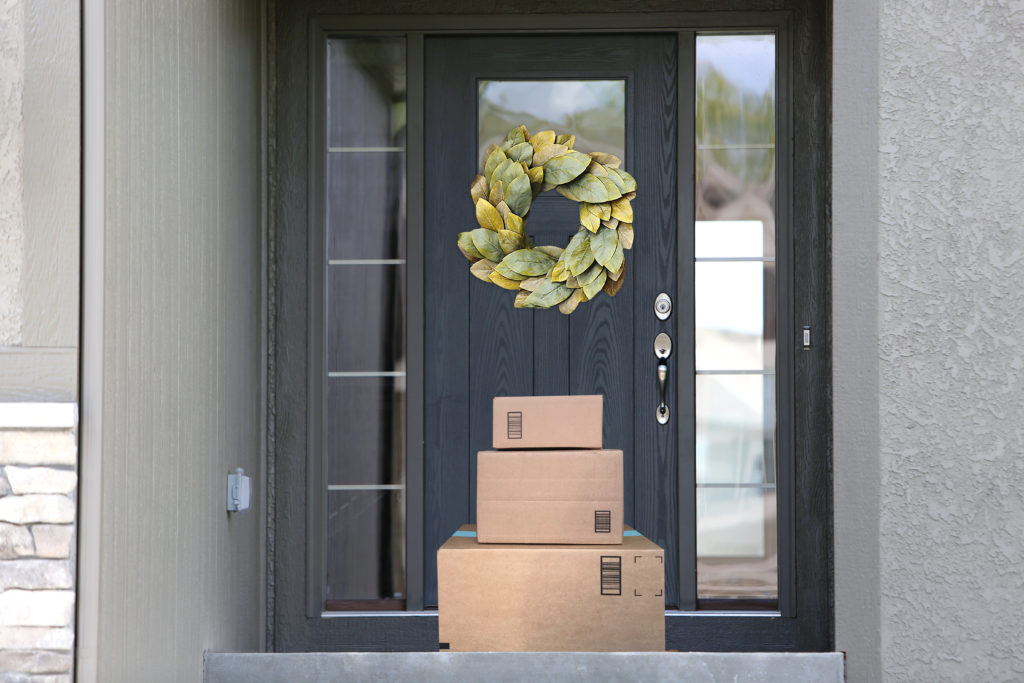Published:
August 25, 2020

When online shopping began, brands needed to develop supply chains to mail products to customers. For many companies, it was a DIY operation, said Kory Johnson, design manager for Green Bay Packaging.
“People bought brown boxes, packed the product and shipped them out.”
Recognizing the need for packaging to endure the rigors of shipping through delivery, coupled with the massive number of products now being mailed, brands must rethink how they ship. Product packages designed for sitting on store shelves were not built to withstand the inherent rough and tumble of shipping.
Customers want their purchases delivered safely, but they also want brands to have environmentally conscious practices that decrease excess packaging, even when shipping. Safe and environmentally conscious packaging and shipping are essential, but beyond the practical considerations, online customers want to be excited when their packages are delivered. Packaging companies have the opportunity to use their expertise to provide value to brands, helping those retailers outpace competitors by influencing customer satisfaction, even after the purchase has been delivered. Here’s how:
Brands Should Partner with Packaging Companies To Safely Deliver Purchases
Customers want their purchases to arrive on time and intact. Although this sounds like a basic expectation, ensuring that every product arrives in perfect condition requires thoughtful structural design and planning for the packaging. Will the item ship in its own packaging or a secondary one? Will it be alone in the box, or does it need to be protected from other items in the package? Does it need to be temperature-controlled? Can the delivery material withstand the elements if left at the front door in the rain or snow? When a customer receives a package that is damaged — even if it’s only a dent in the corrugated box — the quality of the item is questioned, Johnson said. Even if the retailer assures the customer that the product is still fine, the customer will have doubts about the functionality of the product, he added. “Any damage of a package can make a difference for some products.”

When a package arrives damaged, it’s a poor first brand impression. But when the product itself arrives damaged, the customer is often understandably frustrated and angry — feelings that might last, even if the brand replaces the item or gives a refund. The customer’s first impressions of the product, brand and retailer are affected negatively, and are not easily repaired. A damaged product or package isn’t just bad for customer relations or brand reputation. It’s also expensive. During the 2018 holiday season, e-commerce return shipments cost $32 billion, with 20% to 30% of those costs due to damaged goods. One study found that 21% of oversize packages arrive damaged.
Packaging companies can help brands avoid product damage by recommending and developing containers that have the size and durability to protect their contents. This is already happening for vendors that use Amazon for distribution. Amazon, which represents 37% of 2019 e-commerce sales, introduced its Frustration Free Packaging Program. The program guidelines are intended to make packages easier for customers to open and create less waste, with a size and design to navigate Amazon’s channel distribution more easily. The guidelines are more than just a suggestion: packagers that don’t follow them are subject to fines. By using stacking, vibration and drop tests, packaging companies can ensure their products meet Amazon guidelines and other shipping recommendations to save their retail customers time and money.
Still, packaging companies can do more, Johnson said. “We’re also doing a lot of testing early on in the design process because a lot of customers know they’re going to have to pass Amazon testing in the end. We want to make sure we’re keeping that in mind when we’re developing packages.”
Help Brands Address Consumers’ Environmental Concerns
Customers are increasingly environmentally focused, and although they love the convenience of online retail, they are concerned about the effect of businesses mailing 165 billion packages in the United States each year.
Knowledgeable packaging companies can show e-commerce businesses ways to reduce packaging waste. Besides being certified as part of Amazon’s program, packaging companies can use recyclable materials, such as corrugated cardboard, which is recycled at a rate of 70% (compared with all plastic, which is recycled at a rate of 9%).
Being environmentally conscious goes beyond the cardboard box to include recyclable inserts. Green Bay Packaging, for instance, uses recyclable shredded Crinkle Cut paper from Spring-Fill Industries as cushioning in shipping boxes. “How important is it to your end user to have environmentally friendly products in environmentally friendly packaging?” Jane Skalmoski, CEO of Spring-Fill, asked. “Well, it appears to be very important. We believe that’s why our business has experienced double digit growth in the past three years of our ownership.” In 2019, Skalmoski said, her company shipped over 12 million pounds of recyclable shreds for packaging and product protection. “We are hearing from major retailers that being biodegradable, environmentally friendly, nontoxic, and safe for the environment is very important, not just to the end user, but to the retailers themselves.”
Through their own efforts, packaging companies can carve the path for brands to meet consumers’ expectations for environmentally conscious products and packaging.
Give Package Delivery Excitement
For many e-commerce shoppers, their first real-life interaction with the brand is when the package is delivered. Brands can make that moment stand out by using differentiated packaging that carries the brand name and continues the product’s marketing message.
Two packaging trends that are essential for companies to note: the unboxing experience and the rise of the subscription-box industry.
Unboxing the Package
Packaging companies can help brands add a special thrill for customers through customized packaging. One survey found that consumers were more likely to make a subsequent purchase from an online retailer that provided premium packaging. The study also reported that premium packaging made a brand seem upscale and built customer anticipation. Unboxing purchases becomes an event, and when customers share that experience on social media, they become brand ambassadors.

Brands used to print logos and other information on the outside of the box, but that trend has decreased because of theft, said Brad Bloomenrader, sales manager at Green Bay Packaging.
“Now, some of our customers are printing on the inside for that unboxing experience or to bring a premium look and feel for when the person opens that package,” he said. Packaging companies can help brands create every step for memorable unboxing, from developing a logo or tagline to determining the container type and parameters. Inside the boxes, fillers, such as shreds, protect the product while adding color and a sense of fun. Brands can also insert promotional material, personalized notes, samples and gifts. These elements make opening the box feel like opening a present — even when customers bought it for themselves.
“Printing the brand’s message on the inside of the box is a cost-effective way to engage the end consumer with brand information or additional promotional and sale opportunities, said Catharine Rathbone, retail insights manager at Green Bay Packaging. “For example, with the surge of over 80% in redemption rates of promotional QR codes, brands can have these codes printed on the inside of the box to increase interaction and collect data on their customer base through sales or membership. QR codes allow another level of engagement with the consumer beyond the traditional retail environment.”
As marketers focus on creating a unique unboxing experience, packaging companies help them make an impression on the customer.
“Brand managers expect us to guide them through that process and help them avoid mistakes or unnecessary effort,” Bloomenrader said.
Signing Up for Subscription Boxes
Dollar Shave Club. Stitch Fix. Birchbox. Ipsy. These brands provide curated products to customers weekly or monthly. And they’re not alone. Amazon and other retailers — both brick and mortar and online — are getting into the game. It’s not surprising that the market for subscription boxes is expanding rapidly. Between 2013 and 2018, the market grew more than 100% each year. As the market grows, so, too, will the need for packaging. The emphasis on personalization will extend beyond the product to the package itself. “The entire industry is working for the convenience of the customer,” Skalmoski said. “Most of these curated subscription box companies are interested in doing things that are safe for the environment. There’s a real push to use corrugated boxes that are printed and incorporate decorative and protective features, like our enhancing Crinkle Cut shreds.” With subscription boxes, just as with other types of retail shipping, packaging companies can use their expertise to help brands convey the marketing message effectively and enjoyably. These packages also serve as a way to bring retail to consumers’ doorsteps in a durable and environmentally friendly way.
The customer journey continues long after the online order is placed. When the shipment arrives at a customer’s home, the package plays a pivotal role in the customer’s impression and satisfaction. Packaging companies can help brands influence that perspective and stand apart in a crowded marketplace. Also, these companies can help e-commerce businesses improve their ROI with efficient packaging that protects products, reducing damage, waste and cost of returns, all while being an environmentally friendly solution.
